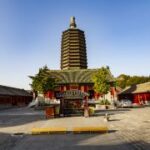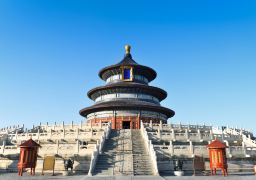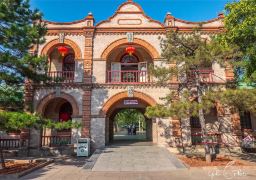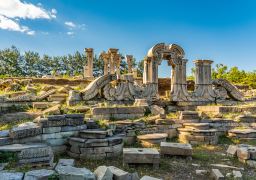The Kuoru Pavilion, also known as the Octagonal Pavilion in all directions. It is a double-eaved octagonal pavilion. It is not only the largest of more than 40 pavilions in the whole garden, but also the largest of its existing similar buildings in China. With a construction area of about 130 square meters, it is supported by a total of 40 pillars in three inner and outer circles, of which 24 are cylindrical pillars and 16 are square pillars.
The roof adopts the form of double eaves and pointed ridges. All the purlins are decorated with Xuanzi colored paintings. The Kuoru Pavilion is located on the east embankment south of the newly-built palace gate of the Summer Palace and at the east end of the Seventeen-Arch Bridge. The architectural form is stretched and stable, and the momentum is majestic. It sets off each other in space with the Seventeen-Arch Bridge and Nanhu Island, and the combination is seamless. During the period of the Qingyi Garden, there was a three-story Wangchan Tower on Nanhu Island. The Wangchan Tower, the Kuoru Pavilion on the east embankment, and the Seventeen-Arch Bridge on the water surface together form a magnificent scenery of high buildings, long bridges, and huge pavilions with orderly undulations. When Emperor Qianlong built this pavilion, he built it on the west embankment of Changchun Garden to show the boundary between the Qingyi Garden and Changchun Garden. Because there is no east wall, looking at the boundless green fields in the southeast from here, the line of sight is extremely wide, so it is also named ‘Kuoru Pavilion’. The plaque hanging in the pavilion is an excerpt from Emperor Qianlong’s handwritten imperial poems and classic masterpieces. Opening hours: Open all day throughout the year.The Summer Palace – Kuoru Pavilion
The Kuoru Pavilion, also known as the Octagonal Pavilion in all directions. It is a double-eaved oct[...]









